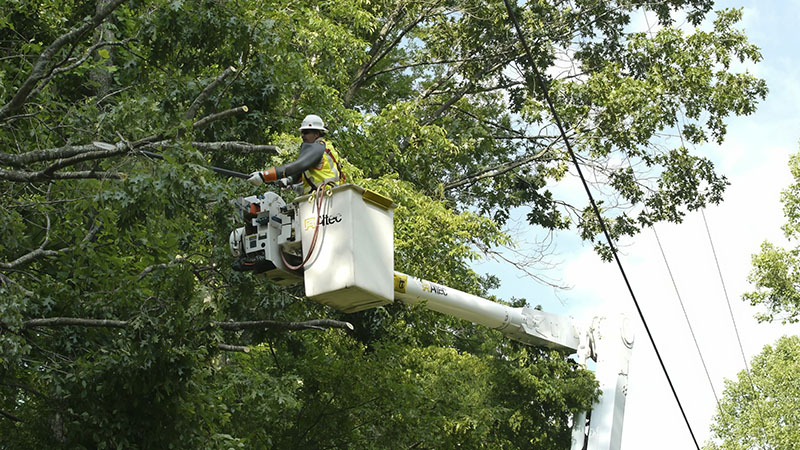Preparing for Climate and Energy Disasters
An increase in severe weather means the utility industry needs a better vegetation management plan
Este es nuestro intento de convertir las historias en audio español usando Inteligencia Artificial. Aún así le recomendamos que reconfirme ciertas palabras clave y temas. ArborTIMES no garantiza ni se responsabiliza de la conversión del inglés al español de los relatos.
_

Photo courtesy of rawpixel.com
Our infrastructure has become extremely susceptible to natural disasters caused by climate change. Unfortunately, as climate change progresses, the instances of natural disasters will become more frequent and more intense.
With the energy sector interacting with all other utilities, such as water and gas, it is important to understand the impact of these severe weather instances and how to prepare for them.

This year, we have seen a massive increase in severe weather that has put a strain on utilities across the country. According to National Oceanic and Atmospheric Administration (NOAA) report, there have been 15 individual weather and climate disaster events from January through July 2023, one of which was a winter storm event. The cost of each of these disasters exceeded $1 billion, the highest amount recorded by NOAA.
Utilities and related organizations are facing more significant strains due to these severe weather events. They have had to invest time, money, and resources to increase the power grid’s resiliency and implement preparation plans for weather events.

These disasters can also cause regulations to change quickly, which forces utilities to adapt to new policies, preparation guidelines, and more in a very tight time period.

Disasters aren’t limited to storms. While events like snowstorms and tornadoes are disasters, there are many others that don’t fall into the storm category. Earthquakes, wildfires, heat waves, cold snaps, landslides, volcanic eruptions, and so many more fall under natural disasters.
Each of these disasters can wreak havoc on the surrounding utility grid, so it is crucial to have plans in place to prevent and minimize damage before it occurs.
Having a vegetation management plan
While you undoubtedly already have a utility vegetation management (UVM) program in place, disasters and other needs can arise unexpectedly. This means that you likely need to expand the program or pivot to take a new strategy.

Depending on where you are located, what weather you can expect, and what preparations you have in place, it may be beneficial to reach out for assistance with your UVM program. In addition to building a strategy to manage vegetation on your system, UVM programs also typically include strategies to help prevent wildfires and outages caused by storms or other disasters.
UVM and the energy sector are extremely complex, both playing an important role in supplying energy to homes, businesses, medical facilities, and so much more all over the country. With such a wide reach and impact, new and changing regulations and specifications in UVM and the energy industry can happen quickly. When these changes are made, it is important that your utility company is able to react, respond, and adapt quickly.

Preparation is key
Good employees are crucial to the function of your program or company. Not having them can put you at risk of falling victim to disasters.
Trying to hire someone new in time to keep everything running smoothly can be nearly impossible. You want to hire the best person — not the first one that comes along. Working with another UVM company or having the proper plan in place can help prevent any stalls and keep your program running as smoothly as possible.
You can’t see the future, but preparation is key. You don’t know what is going to happen next week, month, or year, but it is essential that you take the proper precautions so you can respond quickly and efficiently to keep your customers, employees, and systems safe and whole.

Photo courtesy of rawpixel.com
Emergency response systems
Do you have an emergency response system in place? Are there any gaps? Being prepared for an emergency consists of planning and rehearsing your disaster plan, including practicing the implementation of the emergency response system itself.
Make sure you have contracts in place so there are local and national crews that can come in and help restore power and other utilities. Consider also working with a storm and emergency response and restoration team.

These teams take on the responsibility of providing resources, field operations, and directions for various departments in the event of an emergency. These individuals are professionally trained to know exactly how to handle each individual situation while maintaining a calm, productive environment.
Storm and emergency response and restoration teams can be found throughout the country and can be deployed to various locations in a short timeline to assist with utilities during response and restoration efforts.
However, emergency response and restoration teams don’t just have to be involved during an emergency. Agents can work with your utility company to establish a response team, develop a preparation plan, or write a contract to provide their services when they are needed.

ACRT’s Ready Force® is one example of a team that specializes in utility management and support during any kind of disaster. Whether you need help establishing a response plan or adapting to changes, Ready Force can be deployed anywhere in the country within 24 hours.
Working with an emergency response and restoration team can take the pressure off of coming up with a preparation plan and can also assist in getting utilities back up and running when disaster strikes.
Jerry Staton is an ACRT senior operations manager and has been with the company since 2010. Staton oversees storm response as ACRT’s storm team manager and is a former member of the ACRT Services board of directors. He is also a member of the Utility Arborist Association safety committee. Staton holds a bachelor’s degree in forestry wildlife management from Stephen F. Austin University. He also is an International Society of Arborists certified arborist and utility specialist.


